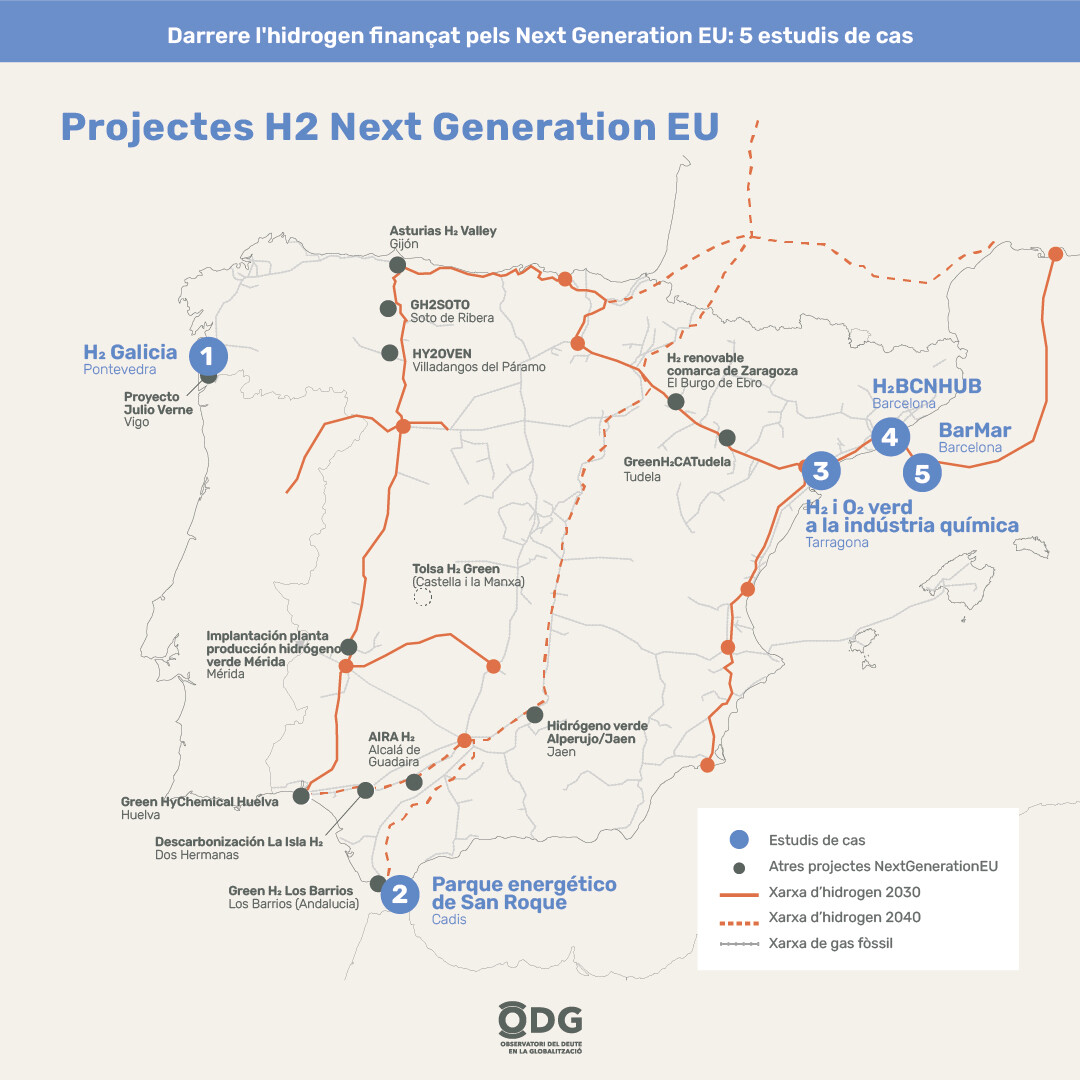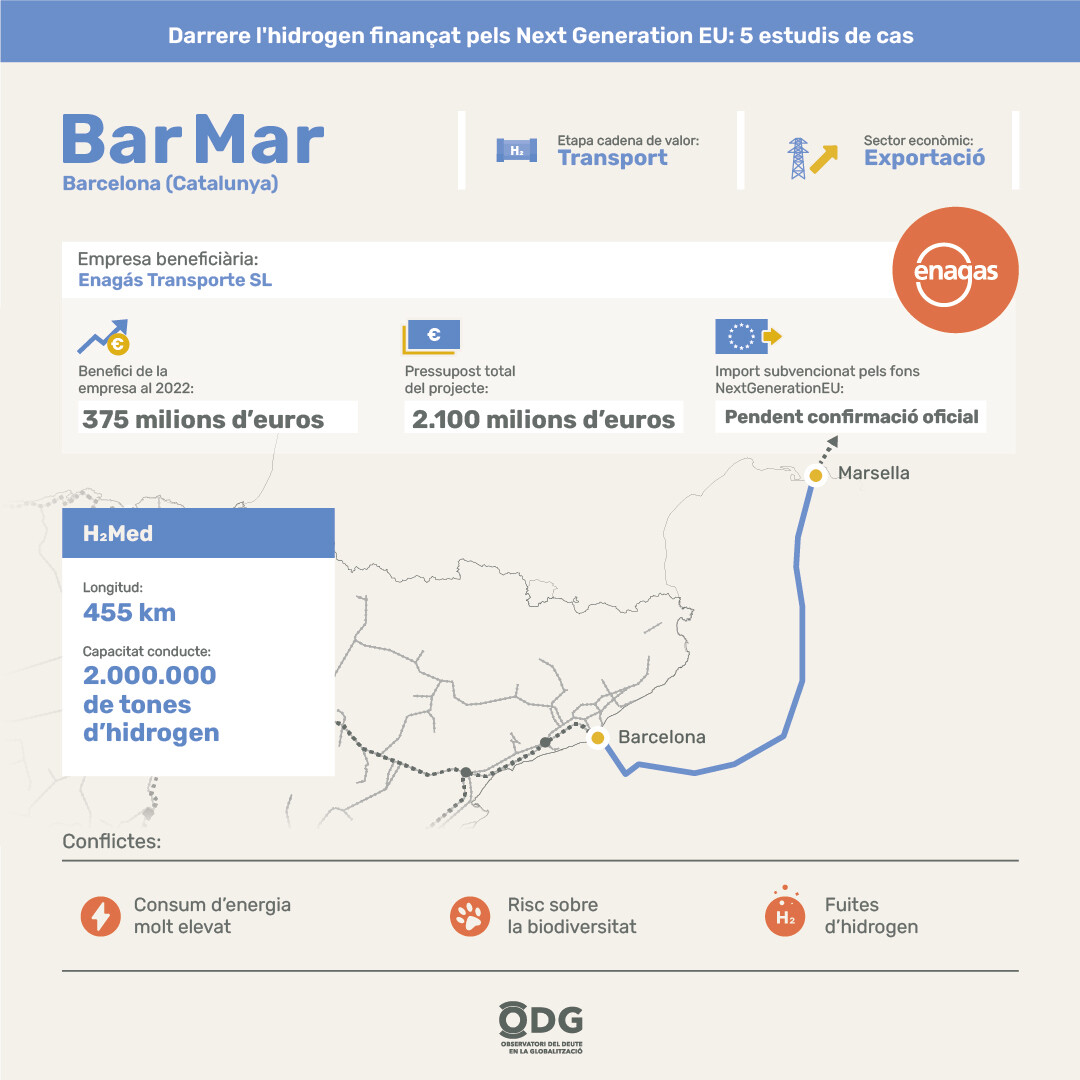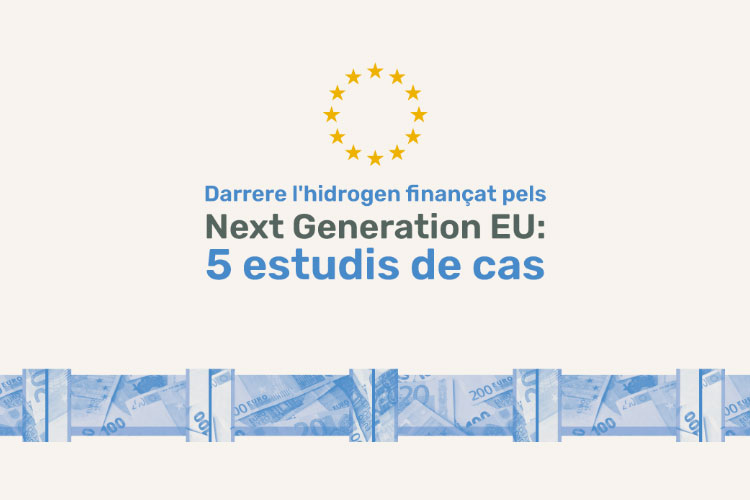We present five case studies of hydrogen projects in Spain funded by the Next Generation EU recovery funds
In December 2022, the Spanish Government presented to the European Commission the addendum to the Spanish Recovery, Transformation and Resilience Plan (Plan de Recuperación, Transformación y Resiliencia. España puede” in Spanish), which will receive 160,000 million euros from the NextGenerationEU European funds. These are public subsidies and loans to be spent between 3 and 7 years on projects for industrial modernisation -mainly for digitalisation, and for the energy, automotive and transport sectors- in order to “fast-track” the green and digital transition of the European economy. 84 billion euros will be loans to be repaid to Brussels. Of the 76 billion euros of public subsidies, more than half will be delivered through PERTEs, which are large public-private partnerships, consortia led by large companies such as Repsol, Enagas or Seat.
The energy transition plays a central role in these transition plans, especially after the Russian invasion of Ukraine, given the need to become independent from Russian fossil fuels as quickly as possible. The strategy on how to do this and how to finance it is outlined in the RePowerEU, which will materialise in an ‘extra’ chapter of the national recovery and resilience plans. In the case of Spain, the government promotes energy transition projects based on the implementation of renewable mega-projects and, especially, on the promotion of hydrogen as an energy vector. The PERTE for renewable energies, renewable hydrogen and storage (ERHA) alone will receive some 10,475 million euros in public aid. If we analyse the hydrogen projects and the transition model behind them, we see that the proposals on the table are mainly large projects – very often with serious environmental, climate and social impacts – that benefit the companies of the energy oligopoly and are based on technological change. They do not propose structural changes that would, for example, assess which energy uses are necessary.

Hydrogen promotion – case studies
On 22 December 2021, the regulatory bases were approved for granting subsidies under the Incentive Programme for pioneering and unique renewable hydrogen projects (H2 PIONEROS Programme) within the framework of the Spanish Recovery,Transformation and Resilience Plan.
This programme is included in the PERTE ERHA and is managed by the Institute for Energy Diversification and Saving (IDAE). On 7 March 2022, a first call for proposals was opened with a budget of 150 million euros for hydrogen production and distribution facilities for the following purposes:
- Industrial uses.
- New uses in heavy road transport, maritime, air and/or rail transport.
- Innovative stationary applications.
The deadline for submitting applications was 6 May 2022 and the proposal for the final resolution was published on 24 February. Although it was proposed that the main beneficiaries would be SMEs, proposals from large fossil and energy companies such as CEPSA, Enagás and Iberdrola have been approved. In the case of CEPSA, it will receive around 13 million euros, while the limit per project was 15 million euros. It is important to note that CEPSA has obtained a net profit of 790 million euros, Enagás 375 million euros and Iberdrola 4,338 million euros in 2022; record amounts or very similar to those obtained in the last five years. This public funding from the PERTE ERHA call for proposals is non-refundable, i.e. it will not be necessary for them to pay back a single euro granted in the call for proposals.
The beneficiary companies also include limited companies created ad hoc for the projects, limited companies in the energy sector or public limited companies in sectors that are difficult to decarbonise, where hydrogen may have a place in the energy transition. Companies such as Clean Energy Venture SL or Industrias Químicas del Óxido de Etileno SA (Iqoxe) are among these companies.
While awaiting further calls for proposals under the H2 PIONEERS Programme, there are other NextGenerationEU funding mechanisms for projects at other stages of the hydrogen supply chain, such as pipeline and ship transport. The Recovery and Resilience Mechanism (RRM) is the one with the largest numbers, since Member States can draft a new chapter of their recovery plans to include energy projects that contribute to the achievement of the REPowerEU targets.
In the case of transport, Enagás has presented, together with other European fossil gas transport system operators, hydrogen transport projects that can connect the different Member States. The one known as BarMar is an underwater pipeline that would connect Barcelona and Marseille, and is part of a “green corridor” that would transport hydrogen from Portugal to central Europe.

The first conclusion we draw from this analysis is that big fossil and energy companies are committing to hydrogen for their energy transition. Moreover, they intend to do so with public funds and safeguards, although their profits in 2022 have been record profits or in line with those of the last few years. On the other hand, a centralised energy model continues to be promoted: although the projects financed are small-scale, they are a first or pilot phase of the project that the beneficiary companies want to implement. The impacts generated by the production and transport of green hydrogen must also be taken into account, such as high energy consumption, increased water stress, occupation of agricultural land, threats to biodiversity, hydrogen leaks, and environmental and social impacts in countries in the Global South due to the extraction of critical raw materials.
